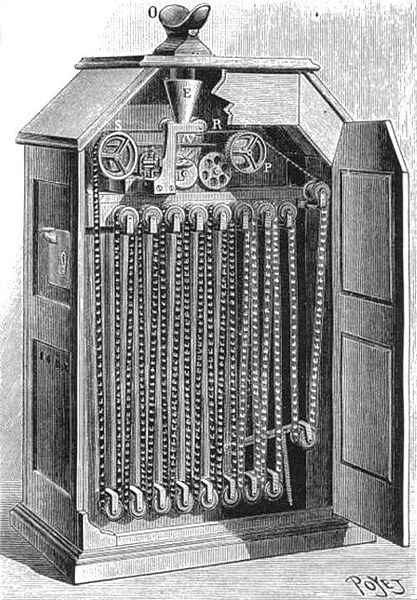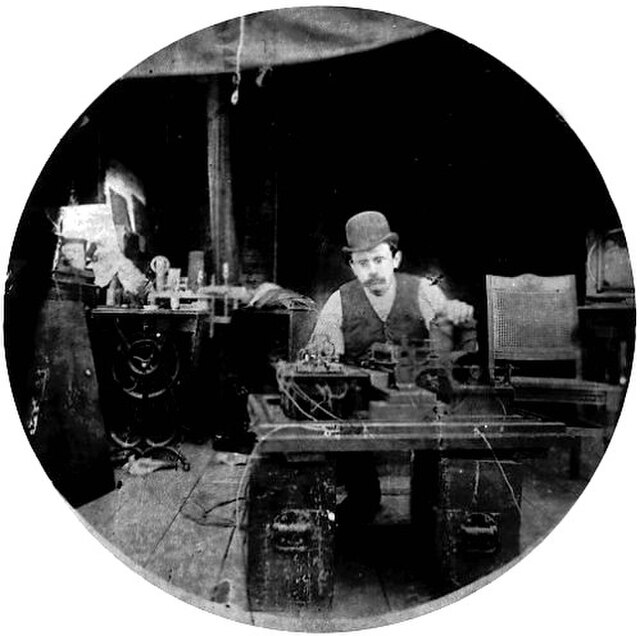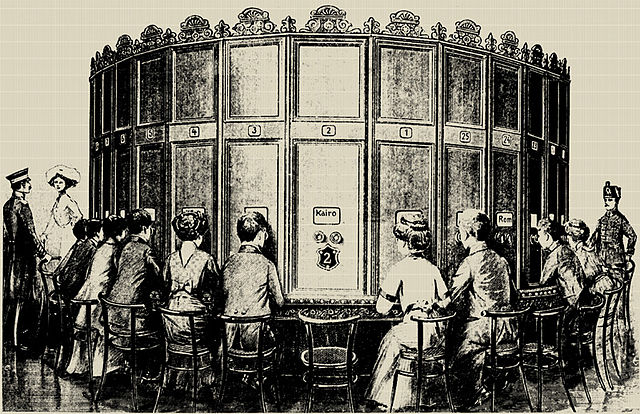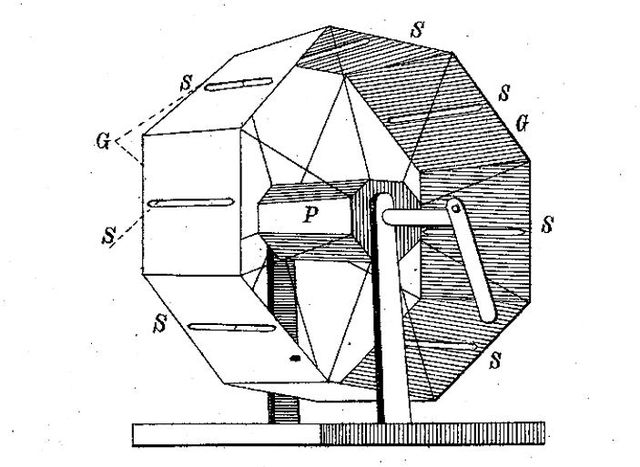The Kinetoscope is an early motion picture exhibition device, designed for films to be viewed by one person at a time through a peephole viewer window. The Kinetoscope was not a movie projector, but it introduced the basic approach that would become the standard for all cinematic projection before the advent of video: it created the illusion of movement by conveying a strip of perforated film bearing sequential images over a light source with a high-speed shutter. First described in conceptual terms by U.S. inventor Thomas Edison in 1888, it was largely developed by his employee William Kennedy Laurie Dickson between 1889 and 1892. Dickson and his team at the Edison lab in New Jersey also devised the Kinetograph, an innovative motion picture camera with rapid intermittent, or stop-and-go, film movement, to photograph movies for in-house experiments and, eventually, commercial Kinetoscope presentations.
Interior view of Kinetoscope with peephole viewer at top of cabinet
Sheet of images from one of the three Monkeyshines films (c. 1889–90) produced as tests of an early version of the Kinetoscope
An acre in size, Edison's exhibit at the Exposition Universelle included an entire electrical power station.
Charles Kayser of the Edison lab seated behind the Kinetograph. Portability was not among the camera's virtues.
Precursors of film are concepts and devices that have much in common with the later art and techniques of cinema.
The Kaiserpanorama, 1880, provided a group stereoscope card viewing experience
Shadow play figures, circa 1780.
Czermak's 1855 Stereophoroskop







